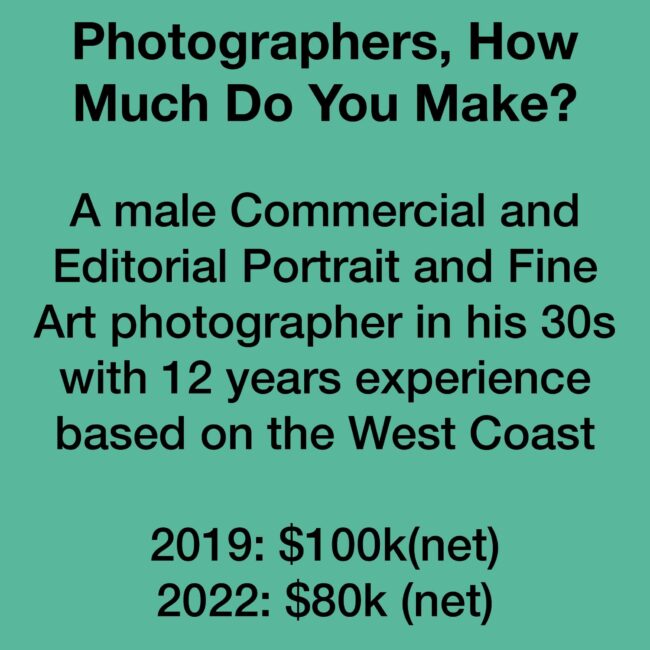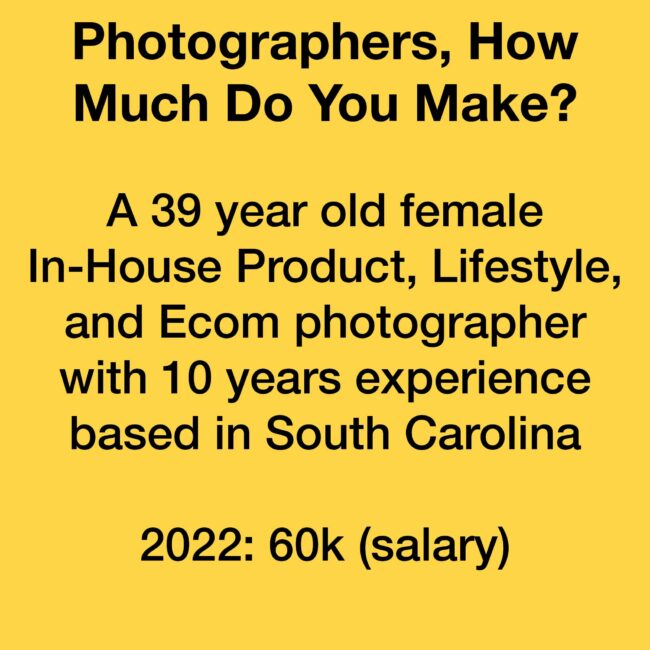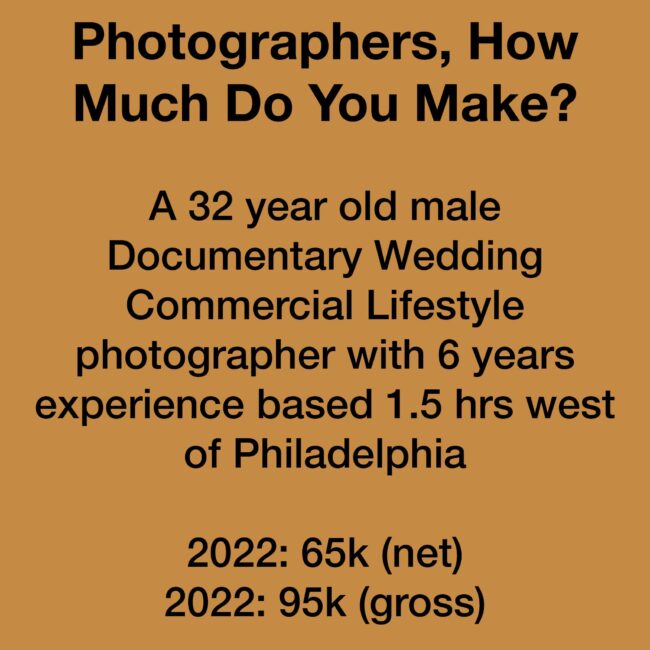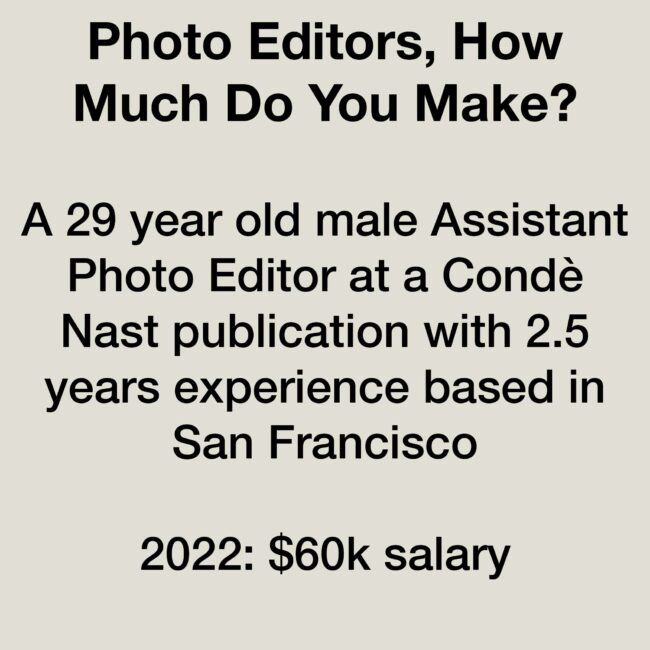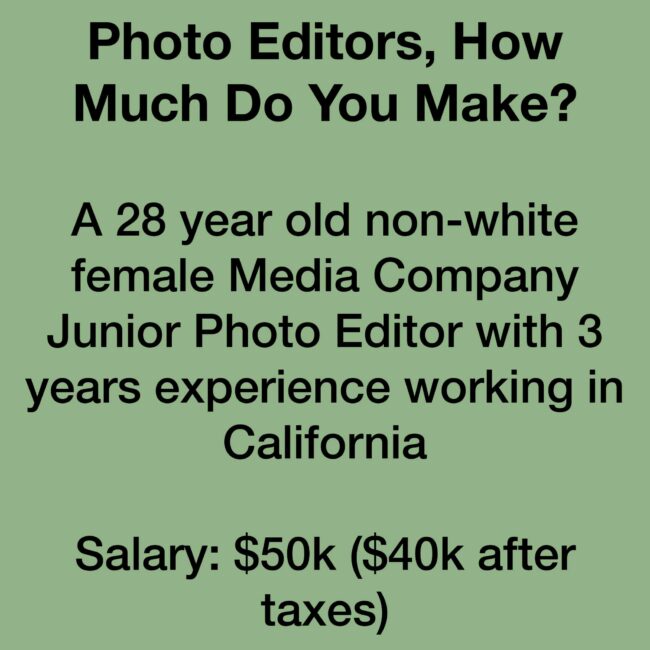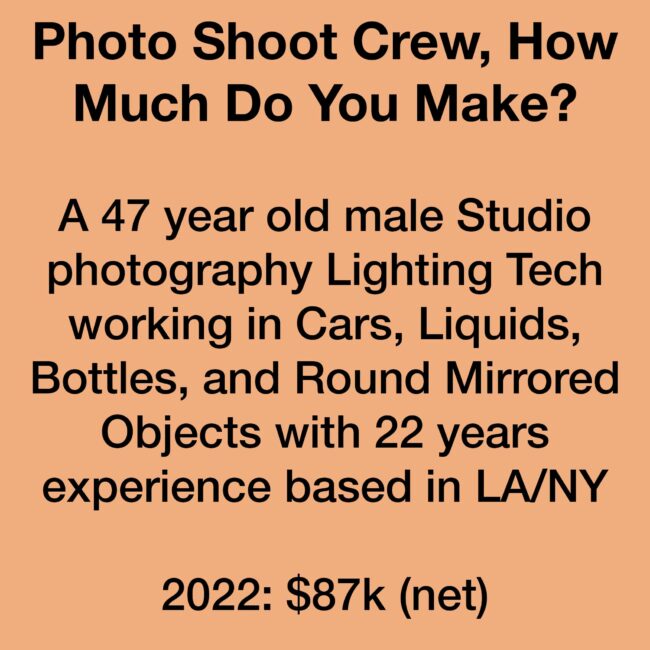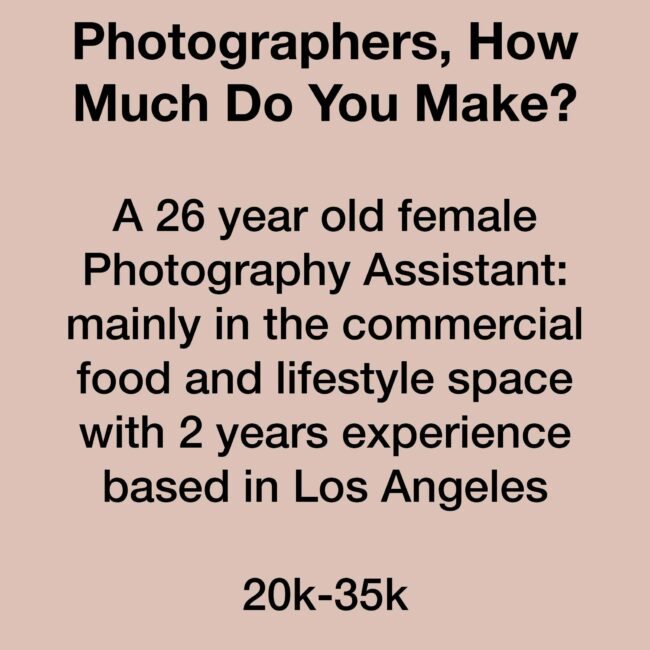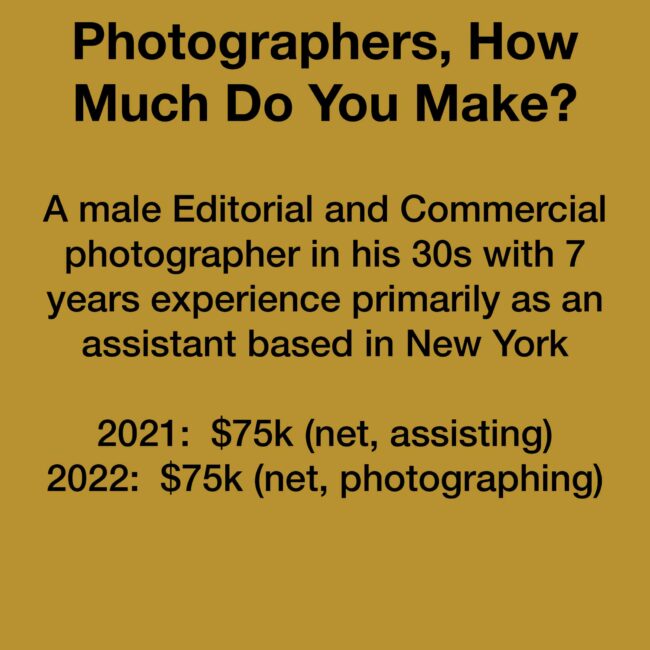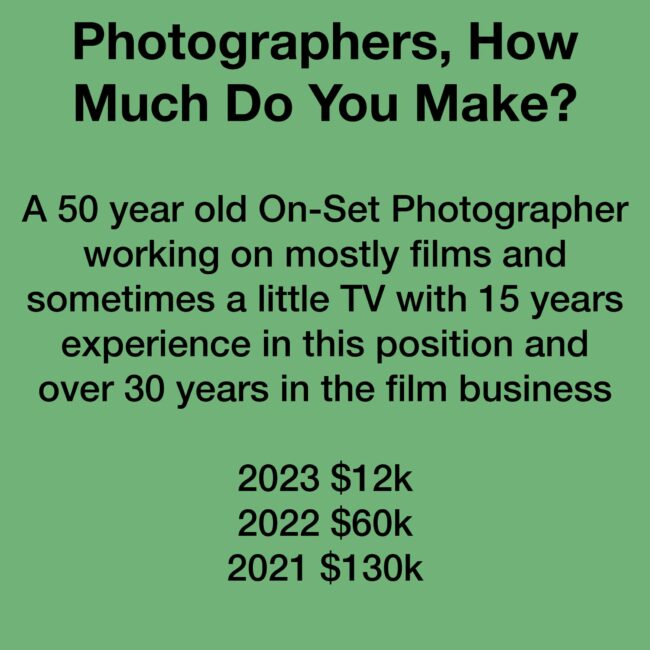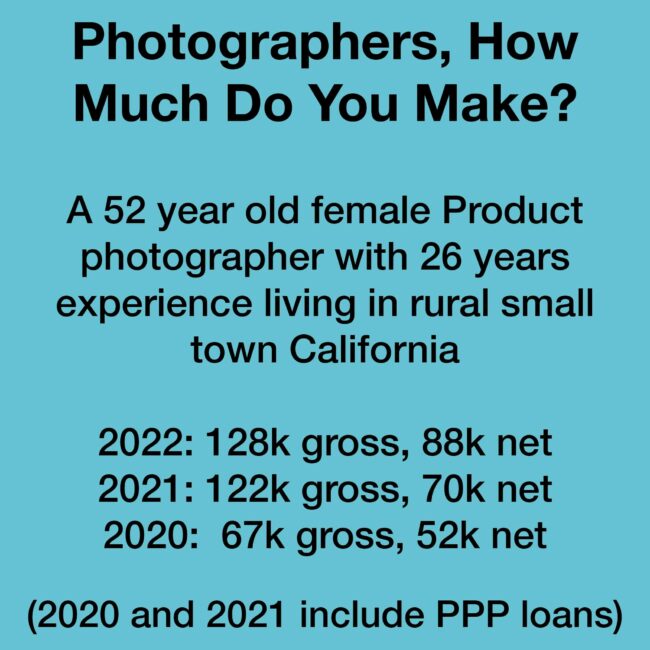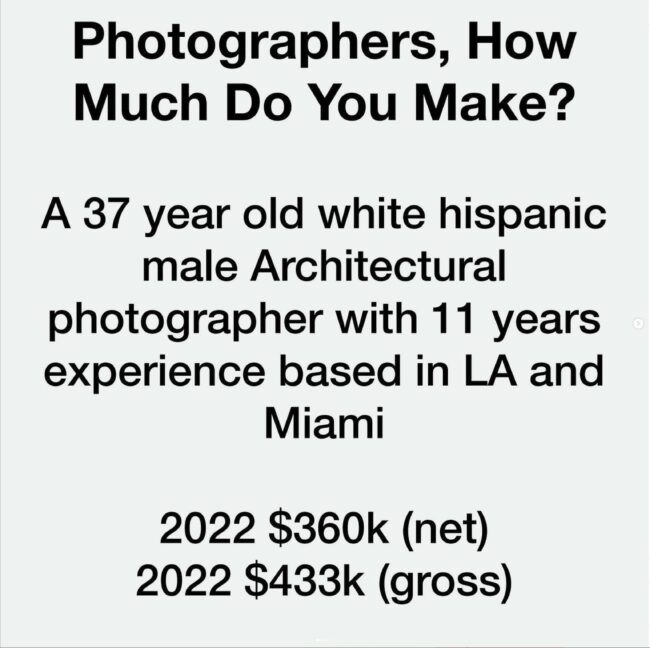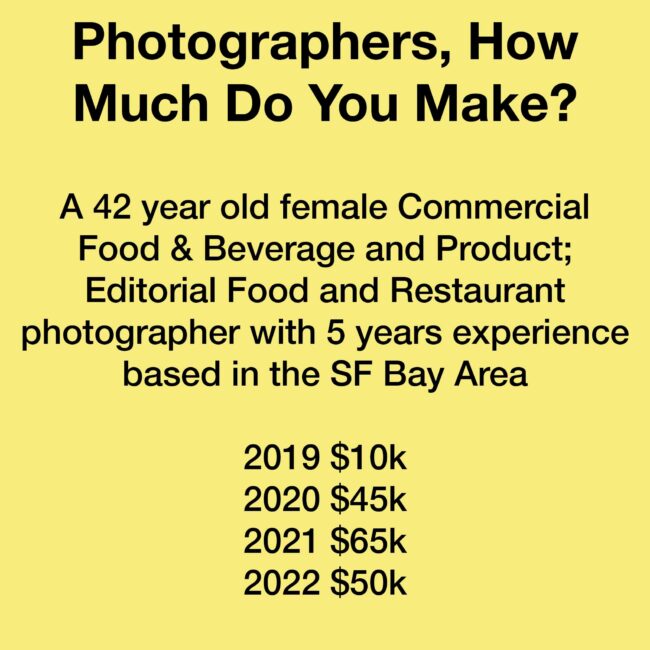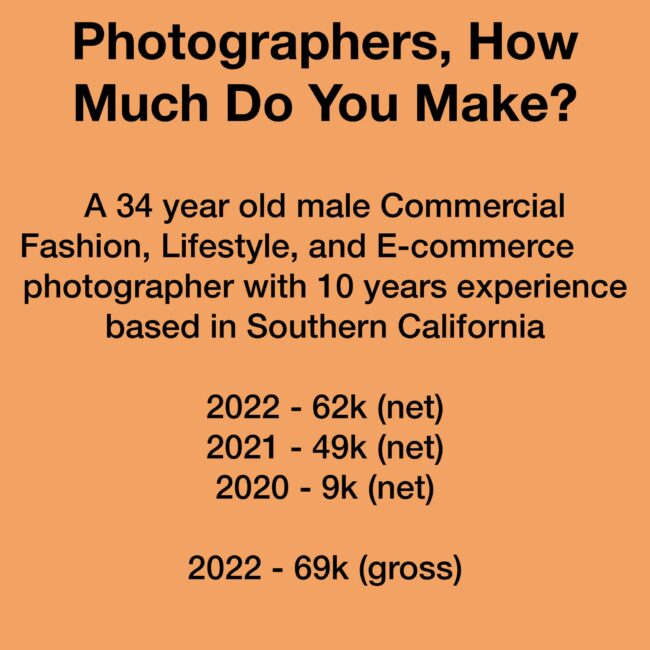It’s been quite humbling reading through these and realizing how business savvy so many photographers are. I have not been particularly smart about running my business. I feel like it’s been 12 years of focussing on the creative side, then just crossing my fingers and praying that people pay invoices within 30 days. I keep everything to the bare minimum with low overheads. I have many different clients in different industries but the bulk of my work is shooting portraits within entertainment/music/arts. Sometimes direct for client sometimes through ad agencies. My income is 65% commercial, 25% editorial, 10% fine art.
I don’t want to be a small business owner – I want to be an artist who can live an acceptable lifestyle solely through my art and I want to have spare time to travel and pursue hobbies. Yes I would like to earn more money and be more successful but I constantly remind myself how lucky I am to be doing this and making any kind of living at all.
I was a professional musician in Europe in my early 20s which lead to my photography career. So I have always had steady work for major record labels and music management companies in the US and EU. Some of my music clients moved into advertising so I began shooting for ad agencies – stills on set mainly. Around 2018 this eventually led to good work with large alcohol and tech companies shooting smaller campaigns.
Then most of these clients disappeared entirely during the pandemic. A lot of my contacts lost their jobs, left the industry or simply changed creative direction. It was worrying for a while.
In that void I have built a little editorial career I never had, shooting for major newspapers and some established magazines. The money is not good but its not too bad and most portrait shoots are short, easy and inspiring. I still do a lot of work for record labels and smaller creative agencies.
I rent a tiny art studio for desk work and fine art stuff. Its a luxury and I love it. Its $425/month. I stopped shooting film this year which has been life-changing financially (and artistically!). I have owned a medium format digital system for a six years now and it is paid off. I own a lot of pretty basic lighting and video gear. I rent it out sometimes which helps.
I am an only child from a single parent. We were comfortable but not wealthy. However I live my life knowing one day I will inherit a house in a major city and that allows me to take risks with my career that many others may not have the privilege to. I am enormously thankful for this.
Also important for people to note that there is a huge amount of unspoken, generational wealth in the photo world. A lot of nepotism too. Especially the more glamorous fashion/fine art side of things. If you feel bad for not publishing that book or finishing that series just know that a lot of people you are comparing yourself to may not face the daily restrictions that you do.
I’m lucky to have a partner with a slightly more stable income who is very supportive.
I shoot about 50 – 70 days a year. Then a lot of editing and admin time in the studio.
I have just reached my pre-pandemic income again. 2020/21 was incredibly tough.
In 2017/18 I had some health and financial problems and a friend got me a job as a camera operator for (some terrible) reality TV productions which paid well for about 30 days of work.
Never forget that as a photographer you have technical knowledge that is valuable to people and you might be able to find some niche work if you ever feel stuck.
I shoot a few editorial portraits a month. These range from $450 to $1k. They usually take 1-2 hours, then I deliver the contact sheet and 1-6 final images. Travel can often be the most time consuming part!
My current commercial jobs are usually 1-2 days, 8-12 hours per day. My base rate is $2500 per day. I make sure that is minimum take home. It is sometimes more, rarely less and never below $1800.
Edit and delivery will often take a day or two. I make sure I charge between $400-600 for these days. If clients want multiple retouched images then more.
I only do all-in budgets or buy-outs really. I need to get better at understanding licensing.
My best paying job was a campaign for a large alcohol brand. 2x travel days, 3x shoot days, 4x edit days. I agreed an all-in fee of $25k and needed to deliver 4 images which were total buy-outs.
I do a lot of favors for friends and my wider network when I have spare time. I never go below $350 for a few hours. If its a full day I’ll charge at least $750. Whether this is headshots for actors or little music videos etc.
People will always ask you for favors as a photographer. Have the courage to say no if you feel so inclined. Just make sure nobody is using your work to make income directly, if they are or if they have personal wealth then ask for your commercial rates.
I used to shoot a lot of video up until 2020. I found it an easy way to make money but weirdly unsatisfying. I have a good portfolio of music videos and branded docs as both director and DoP but really want to focus on stills right now. I would say I was 50/50 in 2019 and in 2022 I was 80/20 stills/video. I think my video career harmed my stills career and stunted my growth as an artist. I am trying to focus on stills from now on but video work will come calling I’m sure.
In this fine art/editorial/commercial world – I think that creating coherent bodies of personal work, then submitting them for features in prominent online magazines is pretty much the best marketing you can do. The last time I did this, it lead to some really great commercial work. I think a lot of people in positions of power, need to see initial recognition from somebody else before taking that leap and commissioning you.
Instagram is of course the necessary evil and undoubtedly the most important marketing tool for a photographer – I put in minimum effort and try to have fun with it. I would say I have a good following for my type of work, but I would also like to get better at using it. It can be real bad for confidence though, just know that a lot of people with big followings are just playing to algorithms or buying followers. Its a fine line between using the platform smartly and keeping your distance from it.
Best advice was to have a positive routine before traveling to a shoot. For me this includes looking through my recent comparable work, thinking about what I should do differently and what I should repeat. I might look through a photo book for inspiration and I’ll try not to think about any stressful everyday life stuff too close to the shoot!
Worst advice was my Dad telling me to “take any job for money”when I was young and inexperienced. I did this for years, it slowed my progress in crafting a personal style which is key for long term success. Don’t listen to your parents too closely if they haven’t had a creative career ha!
Take inspiration from outside photography. Look at paintings, watch sports, get into gardening. Photography careers are evolving rapidly but I still think it’s a long game and the most curious people always win in the end.
